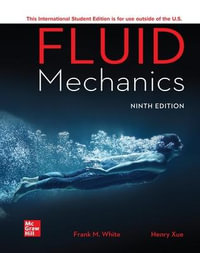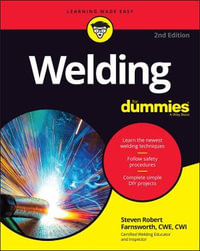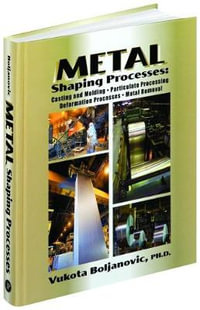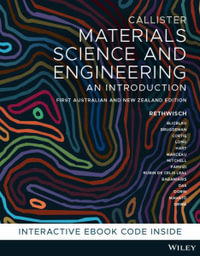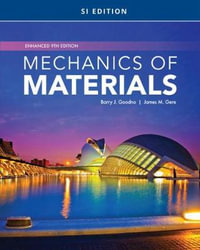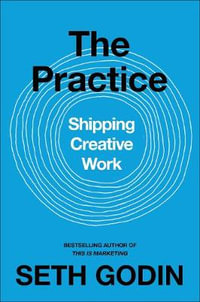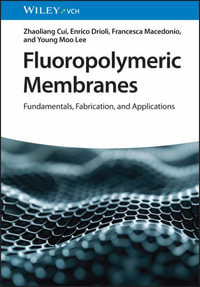
Sense and Avoid in UAS
Research and Applications
By: Plamen Angelov (Editor), Peter Belobaba (Editor), Jonathan Cooper (Editor), Roy Langton (Editor), Allan Seabridge (Editor)
Hardcover | 19 April 2012 | Edition Number 1
At a Glance
380 Pages
25.29 x 17.59 x 2.3
Hardcover
RRP $196.95
$119.25
39%OFF
or 4 interest-free payments of $29.81 with
orAims to ship in 7 to 10 business days
There is increasing interest in the potential of UAV (Unmanned Aerial Vehicle) and MAV (Micro Air Vehicle) technology and their wide ranging applications including defence missions, reconnaissance and surveillance, border patrol, disaster zone assessment and atmospheric research. High investment levels from the military sector globally is driving research and development and increasing the viability of autonomous platforms as replacements for the remotely piloted vehicles more commonly in use.
UAV/UAS pose a number of new challenges, with the autonomy and in particular collision avoidance, detect and avoid, or sense and avoid, as the most challenging one, involving both regulatory and technical issues.
Sense and Avoid in UAS: Research and Applications covers the problem of detect, sense and avoid in UAS (Unmanned Aircraft Systems) in depth and combines the theoretical and application results by leading academics and researchers from industry and academia.
Key features:
- Presents a holistic view of the sense and avoid problem in the wider application of autonomous systems
- Includes information on human factors, regulatory issues and navigation, control, aerodynamics and physics aspects of the sense and avoid problem in UAS
- Provides professional, scientific and reliable content that is easy to understand, and
- Includes contributions from leading engineers and researchers in the field
Industry Reviews
?This book is a good introductory book for anyone interested in unmanned aerial systems and presents in a very comprehensive manner the challenges associated with the basic task of sense and avoid.? (The Aeronautical Journal, 1 January 2014)
Preface xv
About the Editor xix
About the Contributors xxi
Part I Introduction
1 Introduction 3
George Limnaios, Nikos Tsourveloudis and Kimon P. Valavanis
1.1 UAV versus UAS 3
1.2 Historical Perspective on Unmanned Aerial Vehicles 5
1.3 UAV Classification 9
1.4 UAV Applications 14
1.5 UAS Market Overview 17
1.6 UAS Future Challenges 20
1.7 Fault Tolerance for UAS 26
References 31
2 Performance Tradeoffs and the Development of Standards 35
Andrew Zeitlin
2.1 Scope of Sense and Avoid 35
2.2 System Configurations 36
2.3 S&A Services and Sub-functions 38
2.4 Sensor Capabilities 39
2.4.1 Airborne Sensing 39
2.4.2 Ground-Based Sensing 41
2.4.3 Sensor Parameters 41
2.5 Tracking and Trajectory Prediction 42
2.6 Threat Declaration and Resolution Decisions 43
2.6.1 Collision Avoidance 43
2.6.2 Self-separation 45
2.6.3 Human Decision versus Algorithm 45
2.7 Sense and Avoid Timeline 46
2.8 Safety Assessment 48
2.9 Modeling and Simulation 49
2.10 Human Factors 50
2.11 Standards Process 51
2.11.1 Description 51
2.11.2 Operational and Functional Requirements 52
2.11.3 Architecture 52
2.11.4 Safety, Performance, and Interoperability Assessments 52
2.11.5 Performance Requirements 52
2.11.6 Validation 53
2.12 Conclusion 54
References 54
3 Integration of SAA Capabilities into a UAS Distributed
Architecture for Civil Applications 55
Pablo Royo, Eduard Santamaria, Juan Manuel Lema, Enric Pastor and Cristina Barrado
3.1 Introduction 55
3.2 System Overview 57
3.2.1 Distributed System Architecture 58
3.3 USAL Concept and Structure 59
3.4 Flight and Mission Services 61
3.4.1 Air Segment 61
3.4.2 Ground Segment 65
3.5 Awareness Category at USAL Architecture 68
3.5.1 Preflight Operational Procedures: Flight Dispatcher 70
3.5.2 USAL SAA on Airfield Operations 72
3.5.3 Awareness Category during UAS Mission 75
3.6 Conclusions 82
Acknowledgments 82
References 82
Part II Regulatory Issues and Human Factors
4 Regulations and Requirements 87
Xavier Prats, Jorge Ramirez, Luis Delgado and Pablo Royo
4.1 Background Information 88
4.1.1 Flight Rules 90
4.1.2 Airspace Classes 91
4.1.3 Types of UAS and their Missions 93
4.1.4 Safety Levels 96
4.2 Existing Regulations and Standards 97
4.2.1 Current Certification Mechanisms for UAS 99
4.2.2 Standardization Bodies and Safety Agencies 102
4.3 Sense and Avoid Requirements 103
4.3.1 General Sense Requirements 103
4.3.2 General Avoidance Requirements 106
4.3.3 Possible SAA Requirements as a Function of the Airspace Class 108
4.3.4 Possible SAA Requirements as a Function of the Flight Altitude
and Visibility Conditions 109
4.3.5 Possible SAA Requirements as a Function of the Type of Communications Relay 110
4.3.6 Possible SAA Requirements as a Function of the Automation Level of the UAS 111
4.4 Human Factors and Situational Awareness Considerations 112
4.5 Conclusions 113
Acknowledgments 114
References 115
5 Human Factors in UAV 119
Marie Cahillane, Chris Baber and Caroline Morin
5.1 Introduction 119
5.2 Teleoperation of UAVs 122
5.3 Control of Multiple Unmanned Vehicles 123
5.4 Task-Switching 124
5.5 Multimodal Interaction with Unmanned Vehicles 127
5.6 Adaptive Automation 128
5.7 Automation and Multitasking 129
5.8 Individual Differences 131
5.8.1 Attentional Control and Automation 131
5.8.2 Spatial Ability 134
5.8.3 Sense of Direction 135
5.8.4 Video Games Experience 135
5.9 Conclusions 136
References 137
Part III SAA Methodologies
6 Sense and Avoid Concepts: Vehicle-Based SAA Systems (Vehicle-to-Vehicle) 145
Stepan Kopriva, David Sislak and Michal Pechoucek
6.1 Introduction 145
6.2 Conflict Detection and Resolution Principles 146
6.2.1 Sensing 146
6.2.2 Trajectory Prediction 147
6.2.3 Conflict Detection 148
6.2.4 Conflict Resolution 149
6.2.5 Evasion Maneuvers 150
6.3 Categorization of Conflict Detection and Resolution Approaches 150
6.3.1 Taxonomy 150
6.3.2 Rule-Based Methods 151
6.3.3 Game Theory Methods 152
6.3.4 Field Methods 153
6.3.5 Geometric Methods 154
6.3.6 Numerical Optimization Approaches 156
6.3.7 Combined Methods 158
6.3.8 Multi-agent Methods 160
6.3.9 Other Methods 163
Acknowledgments 166
References 166
7 UAS Conflict Detection and Resolution Using Differential Geometry Concepts 175
Hyo-Sang Shin, Antonios Tsourdos and Brian White
7.1 Introduction 175
7.2 Differential Geometry Kinematics 177
7.3 Conflict Detection 178
7.3.1 Collision Kinematics 178
7.3.2 Collision Detection 180
7.4 Conflict Resolution: Approach I 182
7.4.1 Collision Kinematics 183
7.4.2 Resolution Guidance 186
7.4.3 Analysis and Extension 188
7.5 Conflict Resolution: Approach II 191
7.5.1 Resolution Kinematics and Analysis 192
7.5.2 Resolution Guidance 193
7.6 CD&R Simulation 195
7.6.1 Simulation Results: Approach I 195
7.6.2 Simulation Results: Approach II 199
7.7 Conclusions 200
References 203
8 Aircraft Separation Management Using Common Information Network SAA 205
Richard Baumeister and Graham Spence
8.1 Introduction 205
8.2 CIN Sense and Avoid Requirements 208
8.3 Automated Separation Management on a CIN 212
8.3.1 Elements of Automated Aircraft Separation 212
8.3.2 Grid-Based Separation Automation 214
8.3.3 Genetic-Based Separation Automation 214
8.3.4 Emerging Systems-Based Separation Automation 216
8.4 Smart Skies Implementation 217
8.4.1 Smart Skies Background 217
8.4.2 Flight Test Assets 217
8.4.3 Communication Architecture 219
8.4.4 Messaging System 221
8.4.5 Automated Separation Implementation 223
8.4.6 Smart Skies Implementation Summary 223
8.5 Example SAA on a CIN ? Flight Test Results 224
8.6 Summary and Future Developments 229
Acknowledgments 231
References 231
Part IV SAA Applications
9 AgentFly: Scalable, High-Fidelity Framework for Simulation, Planning and Collision Avoidance of Multiple UAVs 235
David Sislak, Premysl Volf, Stepan Kopriva and Michal Pechoucek
9.1 Agent-Based Architecture 236
9.1.1 UAV Agents 237
9.1.2 Environment Simulation Agents 237
9.1.3 Visio Agents 238
9.2 Airplane Control Concept 238
9.3 Flight Trajectory Planner 241
9.4 Collision Avoidance 245
9.4.1 Multi-layer Collision Avoidance Architecture 246
9.4.2 Cooperative Collision Avoidance 247
9.4.3 Non-cooperative Collision Avoidance 250
9.5 Team Coordination 252
9.6 Scalable Simulation 256
9.7 Deployment to Fixed-Wing UAV 260
Acknowledgments 263
References 263
10 See and Avoid Using Onboard Computer Vision 265
John Lai, Jason J. Ford, Luis Mejias, Peter O?Shea and Rod Walker
10.1 Introduction 265
10.1.1 Background 265
10.1.2 Outline of the SAA Problem 265
10.2 State-of-the-Art 266
10.3 Visual-EO Airborne Collision Detection 268
10.3.1 Image Capture 268
10.3.2 Camera Model 269
10.4 Image Stabilization 269
10.4.1 Image Jitter 269
10.4.2 Jitter Compensation Techniques 270
10.5 Detection and Tracking 272
10.5.1 Two-Stage Detection Approach 272
10.5.2 Target Tracking 278
10.6 Target Dynamics and Avoidance Control 278
10.6.1 Estimation of Target Bearing 278
10.6.2 Bearing-Based Avoidance Control 279
10.7 Hardware Technology and Platform Integration 281
10.7.1 Target/Intruder Platforms 281
10.7.2 Camera Platforms 282
10.7.3 Sensor Pod 286
10.7.4 Real-Time Image Processing 288
10.8 Flight Testing 289
10.8.1 Test Phase Results 290
10.9 Future Work 290
10.10 Conclusions 291
Acknowledgements 291
References 291
11 The Use of Low-Cost Mobile Radar Systems for Small UAS Sense and Avoid 295
Michael Wilson
11.1 Introduction 295
11.2 The UAS Operating Environment 297
11.2.1 Why Use a UAS? 297
11.2.2 Airspace and Radio Carriage 297
11.2.3 See-and-Avoid 297
11.2.4 Midair Collisions 298
11.2.5 Summary 299
11.3 Sense and Avoid and Collision Avoidance 300
11.3.1 A Layered Approach to Avoiding Collisions 300
11.3.2 SAA Technologies 300
11.3.3 The UA Operating Volume 303
11.3.4 Situation Awareness 304
11.3.5 Summary 304
11.4 Case Study: The Smart Skies Project 305
11.4.1 Introduction 305
11.4.2 Smart Skies Architecture 305
11.4.3 The Mobile Aircraft Tracking System 307
11.4.4 The Airborne Systems Laboratory 310
11.4.5 The Flamingo UAS 311
11.4.6 Automated Dynamic Airspace Controller 311
11.4.7 Summary 312
11.5 Case Study: Flight Test Results 312
11.5.1 Radar Characterisation Experiments 312
11.5.2 Sense and Avoid Experiments 319
11.5.3 Automated Sense and Avoid 324
11.5.4 Dynamic Sense and Avoid Experiments 326
11.5.5 Tracking a Variety of Aircraft 326
11.5.6 Weather Monitoring 331
11.5.7 The Future 332
11.6 Conclusion 333
Acknowledgements 333
References 334
Epilogue 337
Index 339
ISBN: 9780470979754
ISBN-10: 0470979755
Series: Aerospace Series
Published: 19th April 2012
Format: Hardcover
Language: English
Number of Pages: 380
Audience: Professional and Scholarly
Publisher: John Wiley & Sons (UK)
Country of Publication: US
Edition Number: 1
Dimensions (cm): 25.29 x 17.59 x 2.3
Weight (kg): 0.73
Shipping
| Standard Shipping | Express Shipping | |
|---|---|---|
| Metro postcodes: | $9.99 | $14.95 |
| Regional postcodes: | $9.99 | $14.95 |
| Rural postcodes: | $9.99 | $14.95 |
How to return your order
At Booktopia, we offer hassle-free returns in accordance with our returns policy. If you wish to return an item, please get in touch with Booktopia Customer Care.
Additional postage charges may be applicable.
Defective items
If there is a problem with any of the items received for your order then the Booktopia Customer Care team is ready to assist you.
For more info please visit our Help Centre.
You Can Find This Book In

Performance Characterization of Lubricants
Advances in Manufacturing, Design and Computational Intelligence Techniques
Hardcover
RRP $315.00
$222.90
OFF
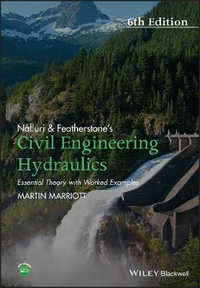
Nalluri And Featherstone's Civil Engineering Hydraulics
6th Edition - Essential Theory with Worked Examples
Paperback
RRP $82.95
$54.35
OFF







